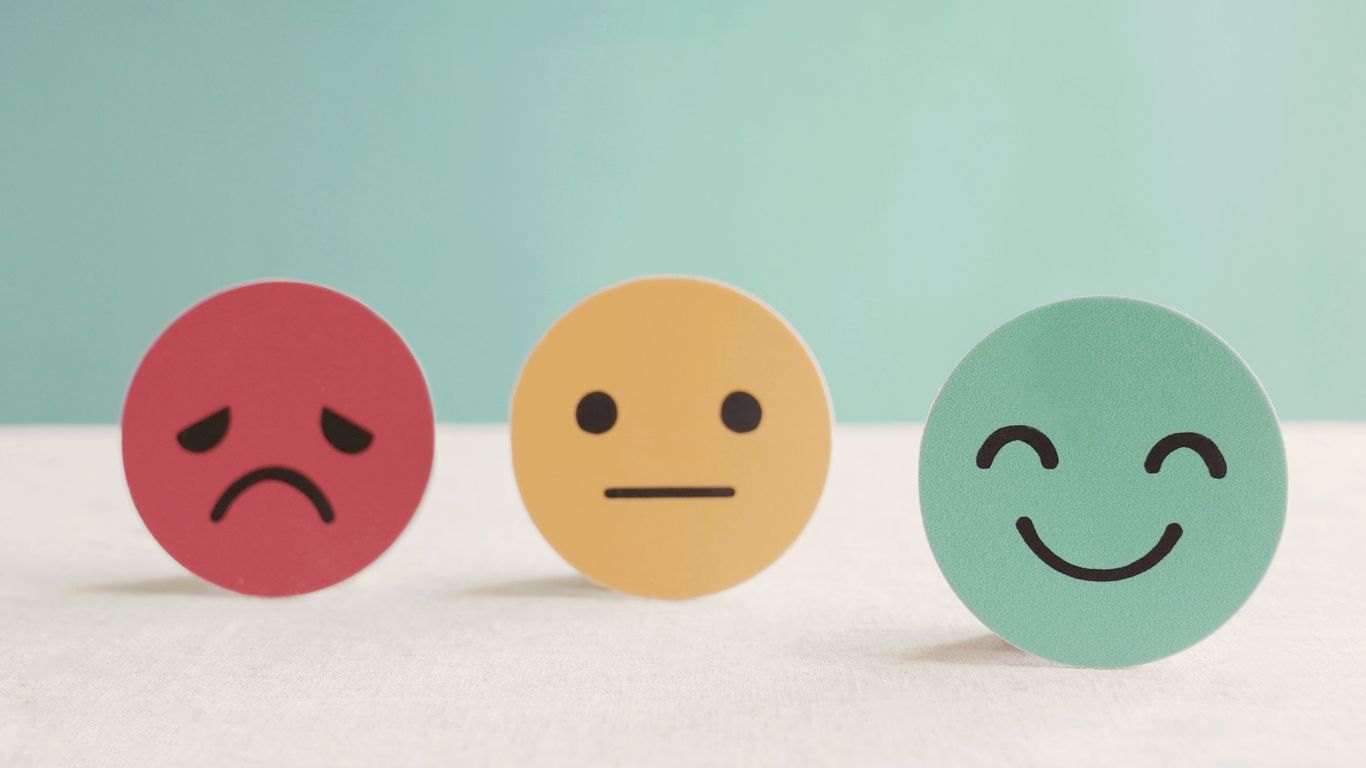Combating the "Winter Blues"
S.A.D., or Seasonal Affective Disorder, is a seasonal depression that effects about 10 million Americans from fall until spring. Let's learn more about it, and how you can combat it!

Understanding Seasonal Affective Disorder: The Winter Blues
As the winter days continue to be short and cold, many people notice a shift in their mood and energy levels. For some, this shift goes beyond a mild case of the “winter blues” and manifests as Seasonal Affective Disorder (SAD), a form of depression that occurs at the same time each year, typically in fall and winter.
What is Seasonal Affective Disorder?
Seasonal Affective Disorder is a mood disorder triggered by changes in seasons. While anyone can experience a dip in mood during the colder months, SAD is more than just feeling down. It’s a clinically recognized condition with symptoms that can significantly impact daily life. Common signs of SAD include:
- Persistent feelings of sadness or hopelessness
- Loss of interest in activities once enjoyed
- Low energy and fatigue
- Difficulty concentrating
- Changes in appetite or weight, often craving carbohydrates
- Sleep disturbances, such as oversleeping
- Feelings of irritability or anxiety
SAD is believed to be linked to reduced exposure to sunlight, which can disrupt the body’s internal clock (circadian rhythm) and lead to a drop in serotonin and melatonin levels—chemicals that affect mood and sleep.
Who is at Risk?
While anyone can develop SAD, certain factors increase susceptibility, including:
- Living far from the equator, where daylight hours are shorter in winter
- Family history of depression or SAD
- Being female (SAD is diagnosed more often in women)
- Having a history of depression or bipolar disorder
Coping with SAD: Practical Strategies to Brighten Your Mood
If you’re struggling with the winter blues, you’re not alone—and there are effective ways to combat it. Here are some tried-and-true methods to help you manage Seasonal Affective Disorder and reclaim your energy and positivity:
1. Light Therapy
- Use a Light Box: Light therapy is one of the most effective treatments for SAD. Spend 20–30 minutes daily using a light therapy box, preferably in the morning, to simulate natural sunlight and help regulate your body’s circadian rhythm.
- Increase Natural Light: Open curtains, sit by windows, or take short walks outside during daylight hours to maximize exposure to natural light.
2. Stay Active
- Exercise Regularly: Physical activity releases endorphins, which naturally boost mood. Aim for at least 30 minutes of exercise daily, whether it’s yoga, brisk walking, or dancing.
- Outdoor Activities: Bundle up and try winter sports or outdoor walks to combine exercise with sunlight exposure.
3. Diet and Nutrition
- Eat a Balanced Diet: Incorporate omega-3 fatty acids, whole grains, fruits, and vegetables to support overall brain health.
- Limit Sugar and Refined Carbs: Avoid foods that cause energy crashes, as they can worsen fatigue and low mood.
- Consider Vitamin D Supplements: With limited sunlight in winter, vitamin D supplementation can help bridge the gap.
4. Build Social Connections
- Stay Connected: Reach out to friends and family regularly to combat feelings of isolation.
- Join Groups or Clubs: Engage in community activities or pick up hobbies that allow for social interaction and shared joy.
5. Establish Routine and Goals
- Stick to a Schedule: Maintain a consistent sleep and wake schedule to support your internal clock.
- Set Daily Goals: Even small accomplishments can provide a sense of purpose and achievement.
6. Mind-Body Practices
- Practice Mindfulness: Try meditation, deep breathing, or progressive muscle relaxation to reduce stress.
- Aromatherapy: Uplifting essential oils like lavender or citrus can enhance your mood.
7. Seek Professional Support
- Counseling: Cognitive Behavioral Therapy (CBT) tailored for SAD can help reframe negative thoughts and develop healthier coping mechanisms.
- Medication: In severe cases, antidepressants prescribed by a healthcare provider may be necessary.
8. Create a Cozy Environment
- Make Your Home Inviting: Use candles, warm lighting, and soft blankets to create a comforting space.
- Add Indoor Plants: Greenery can boost mood and improve air quality.
9. Plan for Joy
- Schedule Fun Activities: Plan events or trips to give yourself something to look forward to during the winter months.
Moving Forward
Seasonal Affective Disorder can be challenging, but with the right tools and support, it’s possible to manage and thrive, even in the darkest months. By incorporating these strategies into your routine, you can lighten the load of SAD and find moments of joy and brightness throughout the season. Below are some resources available to help!
General Online Therapy Platforms:
- BetterHelp
- Services: Individual, couples, and teen therapy
- Features: Licensed therapists, text, chat, phone, and video sessions
- Website: betterhelp.com
- Talkspace
- Services: Therapy and psychiatry (including prescriptions)
- Features: Messaging, video, and phone sessions; insurance accepted
- Website: talkspace.com
- Cerebral
- Services: Therapy and medication management for mental health issues
- Features: Affordable plans, focus on anxiety, depression, and ADHD
- Website: cerebral.com
- Amwell
- Services: Behavioral health therapy and psychiatric care
- Features: Offers insurance coverage, virtual doctor visits
- Website: amwell.com
- 7 Cups
- Services: Peer support, professional therapy, and self-help tools
- Features: Free emotional support chat, paid therapy available
- Website: 7cups.com
Specialized Online Therapy Services:
- Pride Counseling
- Focus: Therapy for the LGBTQ+ community
- Features: Inclusive therapists, secure platform
- Website: pridecounseling.com
- Teen Counseling
- Focus: Therapy for teens (13–19 years old) and their parents
- Features: Mobile-friendly app, licensed therapists experienced with teens
- Website: teencounseling.com
- ReGain
- Focus: Relationship and couples therapy
- Features: Messaging and video sessions for partners
- Website: regain.us
- Thriveworks
- Services: In-person and online therapy with flexible scheduling
- Features: Accepts insurance, immediate appointments often available
- Website: thriveworks.com
- MDLIVE
- Services: Therapy and psychiatry services
- Features: Works with most insurance plans
- Website: mdlive.com
Free or Low-Cost Options:
- Open Path Collective
- Focus: Affordable therapy with licensed professionals
- Cost: $30–$60 per session
- Website: openpathcollective.org
- Rethink My Therapy
- Focus: Mental health therapy and psychiatry
- Cost: Low monthly subscription plans
- Website: rethinkmytherapy.com
To search for a mental health care provider who is local to you and view additional information about their specialties, accepted insurance, and demographics, visit
Psychology Today.
If you or someone you know is in crisis, please reach out to the Suicide & Crisis Lifeline:
In the United States:
- Phone: Dial 988 (available 24/7)
- Text: Send a message to 988
- Online Chat: Visit 988lifeline.org
Additional Resources:
- Veterans Crisis Line: Dial 988, then press 1
- Trevor Project (LGBTQ+ youth): Call 1-866-488-7386 or text START to 678678
You are not alone, and help is always available. 💛



